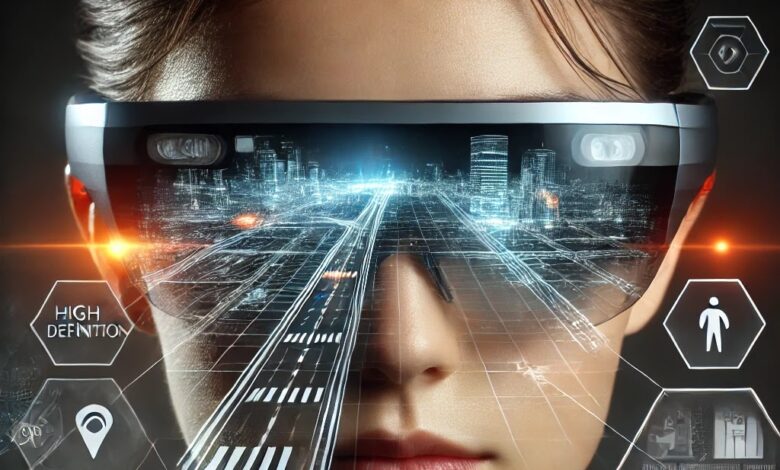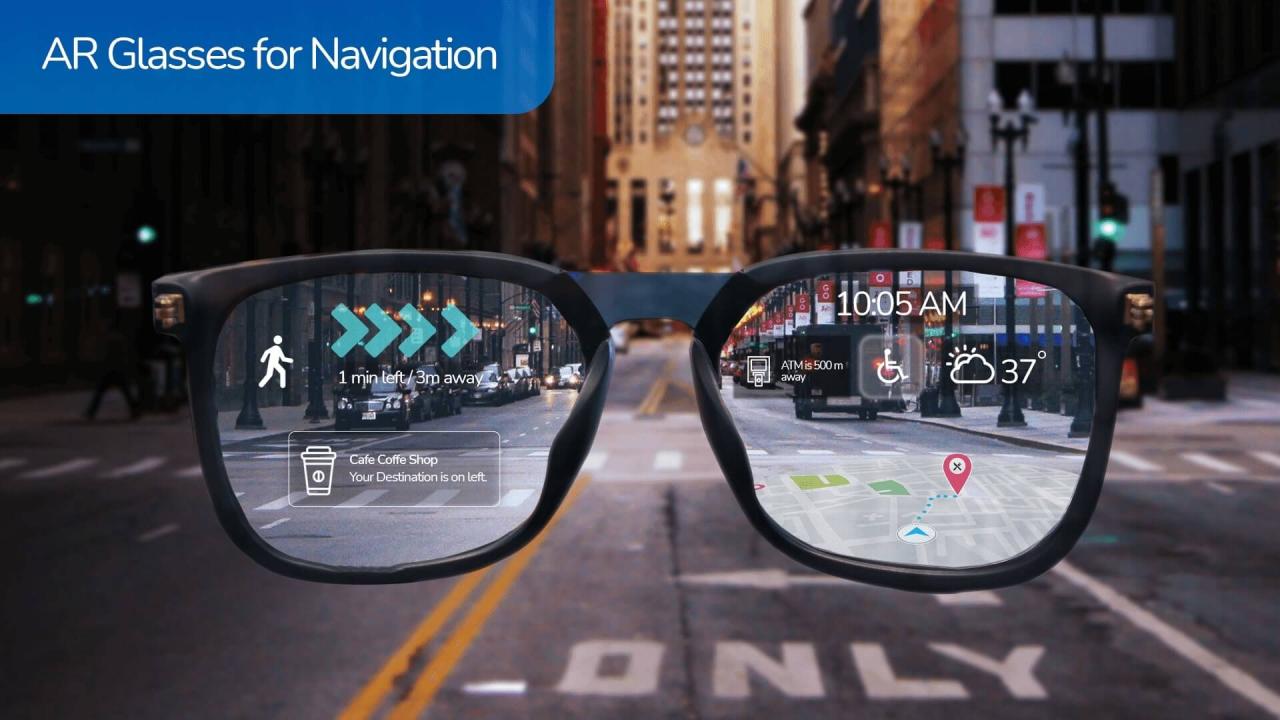The Ultimate Guide to 2024’s Revolutionary AR Glasses

The technological landscape is on the brink of a seismic shift. For decades, augmented reality (AR) has been a futuristic promise, glimpsed in science fiction and experimental prototypes. But in 2024, that promise is finally maturing into tangible, consumer-ready products. This year marks a pivotal chapter not just for wearable tech, but for how we interact with the digital and physical worlds simultaneously. The launch of a new generation of AR glasses is poised to redefine industries, from professional design and engineering to everyday communication and entertainment. This comprehensive guide delves deep into the most anticipated AR glasses launching this year, exploring their groundbreaking technologies, practical applications, and the profound implications they hold for our future.
Understanding the AR Glasses Revolution
Before we examine the specific devices, it’s crucial to understand what sets this new wave of AR glasses apart. Earlier attempts, like Google Glass, were limited by bulky designs, short battery life, and a narrow field of view (FOV). They were often perceived as niche gadgets for tech enthusiasts or enterprise users.
The 2024 generation is different. Advancements in micro-OLED displays, waveguide optics, spatial computing chips, and AI integration have converged to create devices that are sleeker, more powerful, and infinitely more useful. These aren’t just glasses that show notifications; they are spatial computers for your face, capable of overlaying rich, interactive digital content onto your environment with stunning clarity.
A. Key Technologies Powering the 2024 AR Wave
The leap in quality and capability is driven by several core technologies:
A. Waveguide Optics: This is the secret behind making AR glasses look like ordinary eyewear. Waveguides are transparent, wafer-thin pieces of glass or plastic that pipe light from a micro-display on the temple to the lens in front of your eye. They use principles of diffraction or reflection to bend the light, creating a bright, sharp image that appears to float in the world ahead of you. Advancements in mass production of these optics have been critical for reducing cost and size.
B. Micro-OLED Displays: These are tiny, incredibly high-resolution screens that act as the image source. Unlike the LCDs in your phone, Micro-OLEDs are built directly on a chip wafer, allowing for pixel densities so high that the human eye cannot discern individual pixels. This results in text that appears razor-sharp and virtual objects that look solid and real.
C. Spatial Computing Chipsets: Processing AR requires immense computational power. It involves understanding the environment in 3D, tracking the user’s gaze and hand movements, and rendering complex graphics in real time. Custom-designed chipsets, often with dedicated AI processors and computer vision engines, are essential to handle these tasks without overheating or draining the battery in minutes.
D. Computer Vision and AI: This is the “brain” of the operation. Onboard cameras continuously scan the environment. AI algorithms then interpret this data to perform simultaneous localization and mapping (SLAM), understanding surfaces, depth, and objects. This allows digital content to persist on a tabletop or a wall and enables intuitive hand-tracking for interaction.
E. Sensor Fusion: AR glasses combine data from a suite of sensors accelerometers, gyroscopes, magnetometers, depth sensors, and cameras to create a precise and stable understanding of the user’s position and movement in space. This fusion is what prevents the digital overlay from jittering or drifting, making the illusion believable.
B. The Contenders: Major AR Glasses Launching in 2024
This year’s lineup features a mix of established tech giants and ambitious startups, each with a unique vision for AR.
1. The Mainstream Visionary: Meta Ray-Ban Stories (Next Generation)
Meta’s partnership with Ray-Ban proved that style is just as important as substance. The first generation was successful as smart glasses focused on photos, videos, and audio. The next generation, expected in late 2024, is rumored to take a massive leap forward by incorporating a transparent display for true AR functionality.
-
Expected Features: A sleek, indistinguishable-from-normal-Ray-Bans design, improved cameras and audio, a color display for showing information like messages, translations, and directions, and a more powerful AI assistant powered by Meta’s latest LLM (Large Language Model) technology.
-
Target Audience: Everyday consumers. Meta’s goal is to normalize AR, making it a fashionable, social, and practical tool for millions.
-
Potential Impact: This device could be the “iPhone moment” for AR, bringing it out of the enterprise and hardcore tech niche and into the mainstream consciousness.

2. The Ambitious Newcomer: XREAL Air 2 Ultra
XREAL (formerly Nreal) has been a leader in consumer-grade AR glasses for years with its Air series. The Air 2 Ultra, launching in 2024, represents their push into the high-end, spatial computing realm, directly competing with the likes of Apple.
-
Key Technology: The “Ultra” is defined by its full-color 6DoF (Six Degrees of Freedom) tracking. While previous models were largely screen extenders, the Ultra uses advanced sensors to allow digital objects to be pinned to real-world spaces. You can walk around a virtual model, and it will stay locked in place.
-
Use Cases: Positioned as a developer and creator tool, it’s designed for immersive 3D design, AR gaming, and experiential media. It also functions as a powerful external display for compatible smartphones, laptops, and game consoles.
-
Ecosystem Strategy: XREAL is betting on an open ecosystem, compatible with a wide range of devices from iPhones (via a special adapter) to Android phones and PCs.
3. The Enterprise Powerhouse: Samsung x Google (Unnamed Prototype)
The tech world was set abuzz when Samsung and Google announced a partnership to create a new XR (Extended Reality) platform, with hardware expected in 2024. While details are scarce, it’s anticipated to be a high-end device targeting both developers and enterprise users.
-
The Software Backbone: The most exciting aspect is the software. It will likely be powered by a new version of Android designed for XR, giving it immediate access to the vast Android ecosystem and Google’s suite of services like Google Maps (with AR navigation), Search, and YouTube.
-
Hardware Speculation: Expect top-tier Samsung displays, a powerful Qualborg XR chipset, and deep integration with the Samsung Galaxy ecosystem. It will likely be a direct competitor to Apple’s Vision Pro in terms of capability, though perhaps with a more open Android-based approach.
-
Strategic Importance: This collaboration represents the Android ecosystem’s unified response to Apple’s entry into the spatial computing arena, ensuring the market doesn’t become a walled-garden monopoly.
4. The Specialized Performer: TCL RayNeo X2
TCL is a massive player in display technology and consumer electronics. Their RayNeo X2 glasses are one of the first consumer devices to use Micro-LED optical engines, a significant step forward in brightness and efficiency.
-
Standout Feature: The X2 boasts full-color display capabilities without the need for a connected phone or computer—it’s a true standalone AR device. It runs on a Qualcomm Snapdragon XR2 chip, the same platform powering many VR headsets.
-
AI Integration: A major focus is on AI-powered real-time translation. The glasses can translate spoken conversations and displayed text instantly, overlaying the translation directly into your field of view—a killer app for travelers and international businesspeople.
-
Market Position: TCL is aiming for a pragmatic, utility-first approach, highlighting specific problems that AR can solve today, like navigation and translation.
C. Beyond the Hype: Practical Applications Changing Industries
The true value of these devices lies not in the technology itself, but in what it enables. Here’s how 2024’s AR glasses are set to transform various sectors:
A. Healthcare: Surgeons can access patient vitals, MRI scans, and procedural guides without looking away from the operating field. Medical students can practice on interactive 3D anatomical models. Remote experts can guide on-site technicians through complex repairs by drawing annotations directly into their view.
B. Engineering and Manufacturing: Technicians working on complex machinery can have schematics, instruction manuals, and safety warnings overlaid directly on the equipment they are repairing. Designers can collaborate on full-scale 3D prototypes in a shared physical space, making changes in real-time.
C. Retail and E-Commerce: Imagine trying on sunglasses, makeup, or even seeing how a new sofa would look in your living room without ever leaving your home. AR glasses will enable virtual try-ons and product visualizations that are far more immersive and accurate than what’s possible on a phone screen.
D. Education and Training: Instead of reading about ancient Rome, history students can walk through a digitally reconstructed Forum. Mechanics-in-training can learn to rebuild an engine with step-by-step instructions highlighting each part in their actual workspace. This hands-on, immersive learning drastically improves retention and understanding.
E. Daily Life and Navigation: The killer app for consumers might be seamless navigation. Arrow directions can be painted onto the road in front of you. Information about restaurants, like reviews and menus, can pop up as you walk down the street. Your messages and notifications can appear unobtrusively without requiring you to pull out your phone.
D. Challenges and Considerations for Mass Adoption
Despite the excitement, significant hurdles remain before AR glasses become as ubiquitous as smartphones.
A. Battery Life: High-resolution displays and spatial processing are power-hungry. Most current designs either have a short battery life (2-4 hours) or rely on a wired battery pack, which is not ideal for all-day use. Breakthroughs in battery technology and power efficiency are needed.
B. Social Acceptance and Design: Google Glass faced a massive backlash over its “cyborg” aesthetic and privacy concerns. For AR to succeed, the glasses must be socially acceptable. This means they must be indistinguishable from regular glasses in terms of weight, style, and size. They also need clear social cues, like a “recording” light, to alleviate the “privacy nightmare” concerns.
C. The “Killer App”: While many useful applications exist, the one must-have feature that drives every consumer to buy a pair is still evolving. For smartphones, it was initially the combination of the phone, internet browser, and later, the app store. AR needs its own defining, indispensable application.
D. Interoperability and Ecosystem: Will these devices work seamlessly across different operating systems and brands? A closed ecosystem (like Apple’s) offers a polished experience but limits choice. An open ecosystem (like Android’s) encourages innovation but can lead to fragmentation and security issues. The industry is still figuring out the best path forward.
E. The Future is Now: What to Expect When You Buy
If you are considering purchasing a pair of AR glasses this year, manage your expectations. The devices launching in 2024 are incredibly advanced, but they are still early-generation products. They represent the beginning of a long-term shift in computing.
Early adopters will be developers, creators, and tech enthusiasts who are willing to tolerate some rough edges to experience and shape the future. For the average consumer, the second or third generation of these products, likely arriving in 2025-2026, will be the ones that offer a truly seamless, all-day, and indispensable experience.
The launch of these AR glasses is more than just a product release; it’s the opening of a new frontier. It’s the first step toward a world where digital information doesn’t live on a screen in your hand, but is woven seamlessly into the fabric of your reality, enhancing your abilities, enriching your experiences, and connecting you to the world in ways we are only beginning to imagine. The future is not just coming; it’s arriving this year, and it’s putting on a pair of glasses.




